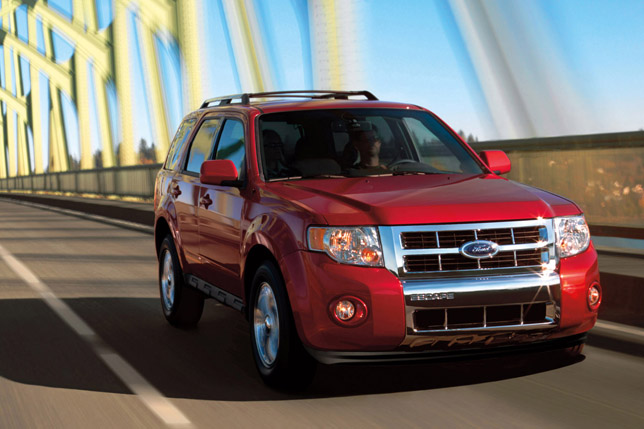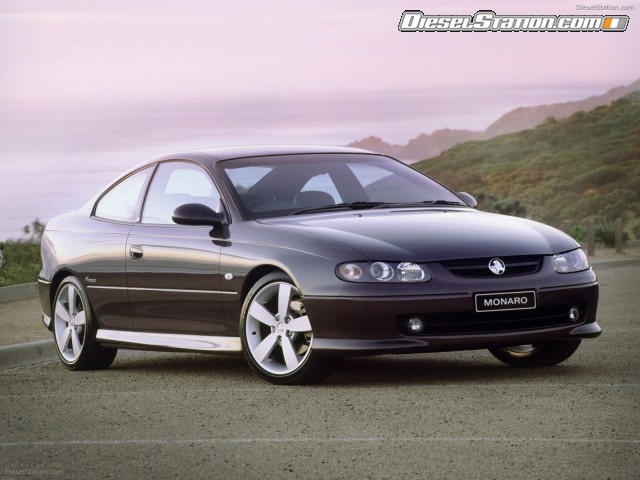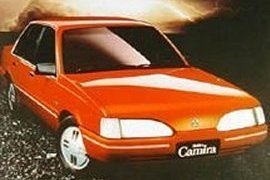Volvo produces models ranging from SUVs, wagons, and sedans to compact executive sedans and coupes. With 2,500 dealerships worldwide in 100 markets; 60 percent of sales come from Europe, 30 percent from North America, and the other 10 percent is from the rest of the world.Volvo's market share is shrinking in the North American market. However, Volvo increased its market share in new markets such as Russia, China and India.Specifically, Volvo expected sales in Russia to double and exceed 20,000 units by the end of 2007, making Russia one of the ten biggest markets for the company. Volvo already boasts the leading position in Russia's luxury car segment.Older models were often compared to tractors, partly because Volvo AB was and still is a manufacturer of heavy equipment, earlier Bolinder-Munktell, now Volvo Construction Equipment. Considered by some to be slow and heavy, they earned the distinction "brick" as a term of endearment for the classic, block-shaped Volvo, with the more powerful turbo charged variants known as "turbobricks".[5] More recent models have moved away from the boxy styles favored in the 1970s and 1980s and built a reputation for sporting performance, but not before the phenomenal success of factory-supported Volvo 240 turbos winning both the 1985 European Touring Car Championship (ETC) and 1986 Australian Touring Car Championship (ATCC).Owners are often proud of achieving prodigious mileages with one well-documented 1966 Volvo P1800S having been driven over 2.6 million miles. According to some figures the average age of a Volvo being discarded is 19.8 years, second only to Mercedes.Reliability is considered better than average and in the USA Volvo dealers are listed by Forbes as the 9th best general car manufacturer and 6th best for luxury cars.
Tuesday, April 28, 2009
The Volvo Pictures
Volvo produces models ranging from SUVs, wagons, and sedans to compact executive sedans and coupes. With 2,500 dealerships worldwide in 100 markets; 60 percent of sales come from Europe, 30 percent from North America, and the other 10 percent is from the rest of the world.Volvo's market share is shrinking in the North American market. However, Volvo increased its market share in new markets such as Russia, China and India.Specifically, Volvo expected sales in Russia to double and exceed 20,000 units by the end of 2007, making Russia one of the ten biggest markets for the company. Volvo already boasts the leading position in Russia's luxury car segment.Older models were often compared to tractors, partly because Volvo AB was and still is a manufacturer of heavy equipment, earlier Bolinder-Munktell, now Volvo Construction Equipment. Considered by some to be slow and heavy, they earned the distinction "brick" as a term of endearment for the classic, block-shaped Volvo, with the more powerful turbo charged variants known as "turbobricks".[5] More recent models have moved away from the boxy styles favored in the 1970s and 1980s and built a reputation for sporting performance, but not before the phenomenal success of factory-supported Volvo 240 turbos winning both the 1985 European Touring Car Championship (ETC) and 1986 Australian Touring Car Championship (ATCC).Owners are often proud of achieving prodigious mileages with one well-documented 1966 Volvo P1800S having been driven over 2.6 million miles. According to some figures the average age of a Volvo being discarded is 19.8 years, second only to Mercedes.Reliability is considered better than average and in the USA Volvo dealers are listed by Forbes as the 9th best general car manufacturer and 6th best for luxury cars.
Posted by rodhi at 11:11 PM 0 comments
Labels: The Volvo Pictures
The Ford New Escape
Ford is in the process of revamping nearly its entire lineup of SUVs, and from the looks of our latest spy photos the 2008 Ford Escape is next in line for upgrades. Although it doesn't appear to be a full redesign, the 2008 Escape will update its front-end styling to match the 2007 Ford Expedition. Larger headlights and a three-bar grille are the biggest changes, although the lower fascia and front wheel arches look as though they have been slightly revised as well.
Caught alongside the Escape prototype was a revamped version of its twin — the Mazda Tribute. It still wore heavy camouflage up front, but it's clear that the Tribute will be getting a nose job, too. Its lights don't look much different than the current model, but the shape of the grille is clearly different. Rear shots of the Tribute reveal only minor changes. The rear window is now rectangular, the chrome trim piece is a little bigger and the badges have swapped sides.
Posted by rodhi at 10:54 PM 0 comments
Labels: The Ford New Escape
The Suzuki Neo Baleno
Posted by rodhi at 10:40 PM 0 comments
Labels: The Suzuki Neo Baleno
Girls Really dig Muscles Car Drive















Posted by rodhi at 9:03 PM 0 comments
Labels: Sweet
Saturday, April 25, 2009
2011 Mercedes-Benz E-Class L First Look
2011 Mercedes-Benz E-Class L Front View2011 Mercedes-Benz E-Class L Car Wallpaper2011 Mercedes-Benz E-Class L Side View2011 Mercedes-Benz E-Class L Luxury Car2011 Mercedes-Benz E-Class L Interior2011 Mercedes-Benz E-Class L Picture2011 Mercedes-Benz E-Class L Rear Seats2011 Mercedes-Benz E-Class L Taillight2011 Mercedes-Benz E-Class L Rear View
Posted by rodhi at 7:11 PM 0 comments
Labels: Mercedes-Benz
Friday, April 24, 2009
The Holden Monaro
Fans of the Falcon GT and Valiant Charger may have derided the Monaro, but it was because of the competition, both on the race track and at the showroom, that 1970’s Australia offered such a wonderful array of quality performance machinery. They were always highly desirable, and inevitably they became highly collectable. Will the lucky owners of the V2 and VZ Monaro’s appreciate they are merely “breaking in” the collectables of tomorrow. We hope so.
The Monaro is an automobile which was produced by Holden, the Australian branch of General Motors from 1968 to 1977 and then re-introduced onto the Australian and New Zealand markets in 2001. It was discontinued in late 2005. Since 1968, three generations of the Monaro have been produced.
Posted by rodhi at 8:08 PM 0 comments
Labels: The Holden Monaro
The Holden Camira Pictures
A station wagon version was introduced the following year, and its bodywork was exported to Vauxhall in the United Kingdom for the Cavalier wagon.[2] Some Camiras were also exported to right-hand drive markets in Southeast Asia, such as Indonesia and Singapore. The wagon variant was specifically a Holden design, and was actually a major demand Holden had in the overall "J-car" program. A five-door hatchback, based on the Opel Ascona/Vauxhall Cavalier "J-car" was proposed for the Camira, however due to Holden's financial losses at that time it never made production. There was only one engine, the carburettored, naturally-aspirated, transversely-mounted 1.6 litre four-cylinder engine delivering 64 kilowatts (86 hp). The transaxle offering was a four-speed manual on the SL and SL/X, with a five-speed unit specified to SJ and SL/E variants. A three-speed automatic with lockup torque converter was optional on the base model, but standard on the SL/E.
The Camira was Wheels magazine's Car of the Year for 1982. While superior to most other cars of the day in terms of ride and handling, the 1.6 litre Camtech engine was regarded as "underpowered" by much of the motoring media, and the Camira suffered from a litany of quality control issues which included smoking engines in early models, lack of drainage holes in the doors, paint quality and lack of adequate fan cooling resulting in overheating in Camiras fitted with air conditioning. This tarnished the Camira's reputation. Camira first came out as the JB series in August 1982 and promptly received a car of the year award, mainly because the judges loved its Euro-like handling and feel. A world car in the General Motors empire, it was built in Australia but carried a fair bit of imported design. This meant that in some ways it wasn’t totally suited to local conditions, particularly in the outback.
These mid-size Holdens have a good cabin with space for four/five adults if they don’t mind juggling the seats to make space for one another. There’s a large luggage area, with the Camira station wagon being a particularly good load carrier. In November 1984, while it was still flying high on the new-car scene, the Camira received a rather controversial sloped-nose facelift for the JD version. Holden backed off and the shape became more conventional in style with the JE in April 1987. Initially all Camiras were four-door sedans. In April 1983 a spacious five-door station wagon was added to the range. Interestingly, the wagon was an Australian design (the sedan was penned overseas) and all wagon rear ends were built here, even those sold in European markets.
Posted by rodhi at 7:59 PM 0 comments
Labels: The Holden Camira Pictures

































